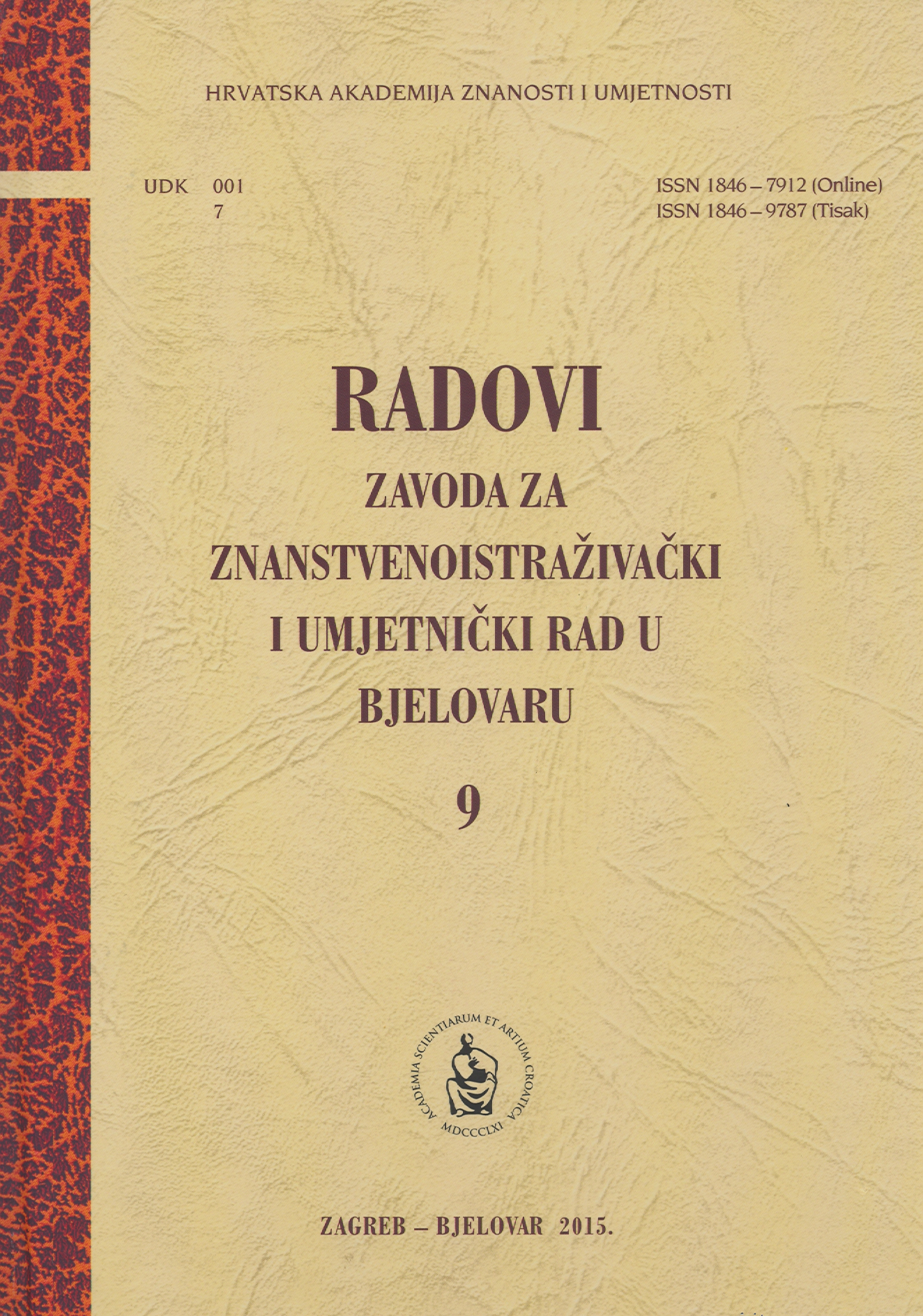Češka seoska mladež (1935. – 1941.)
Czech Rural Youth (1935–1941)
Author(s): Vjenceslav HeroutSubject(s): Education, Cultural history, Customs / Folklore, Ethnohistory, Culture and social structure , Vocational Education, Rural and urban sociology, Interwar Period (1920 - 1939)
Published by: Hrvatska akademija znanosti i umjetnosti - Zavod za znanstvenoistraživački i umjetnički rad u Bjelovaru
Keywords: Rural Junior Youth Society; Rural Youth Association; Karlo Herot; Czecho-Slovak Union; Prokůpkova economic school; harvest festival;
Summary/Abstract: The cultural life of members of Czech national minority in Croatia is very complex. It may be followed through diverse customs marking everyday life, as well as through the work of various cultural societies and institutions. Though researchers from the present Czech Republic have already recorded several aspects of cultural life, there is still a lack of surveys on the contribution of individual cultural societies to the nurturing of the cultural heritage of members of Czech national minority. This paper focuses on the operation of a part of rural youth that became not only a strong link to other cultural associations of members of Czech national minority, forming together with them a whole, but also the propagator and holder of Czech culture in the area of the present Bjelovar-Bilogora County. Organised independent work of members of rural youth commenced later, after they had gained useful experience in Czech besede (associations) under the patronage of senior generations. Since they were not satisfied with this type of relationship, and sometimes not even with the content of the work itself, young people decided to start their independent activity. The first such association, named Rural Junior Youth Society, was established in 1935 in Lipovac (Ljudevitino Selo) near Daruvar. Subsequently, further associations of the kind were established in the wider Daruvar area, in villages where the majority of the population were members of Czech national minority. In the period 1935–1941, in the wider Daruvar area, fifteen such associations were established; in 1940, they numbered 920 members, which made around 60 members per village. Though every association had a leadership of its own and was independent, they were all united within the common Rural Youth Association, which also had a common management led by Karlo Herot, teacher and chairperson, who was the chief initiator of establishing rural youth associations and the leading creator of their policies. These youth associations were the moving force of the cultural life and work in their midst. It was possible to follow their operation until the outbreak of World War Two in 1941.
Journal: Radovi Zavoda za znanstvenoistraživački i umjetnički rad u Bjelovaru
- Issue Year: 2015
- Issue No: 9
- Page Range: 105-139
- Page Count: 35
- Language: English, Croatian

